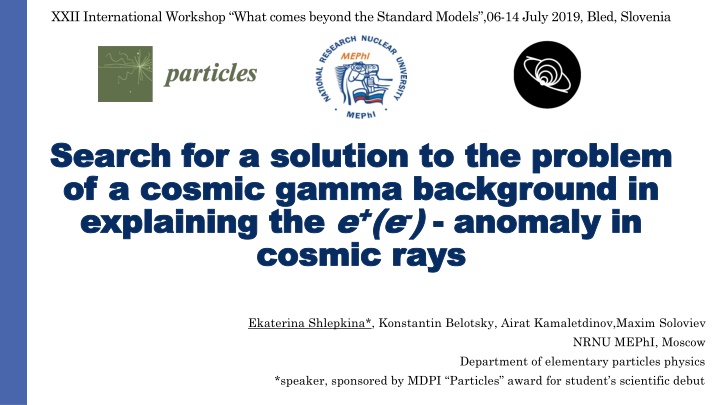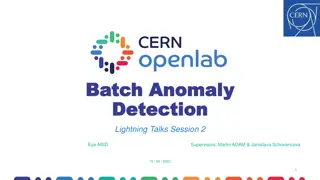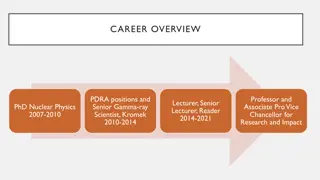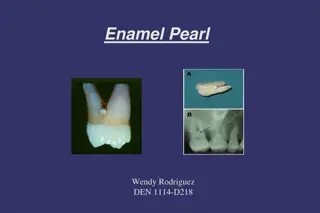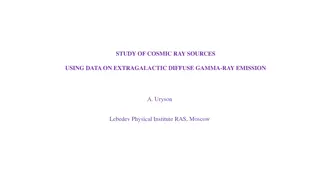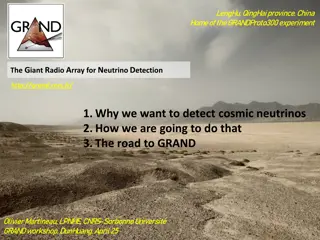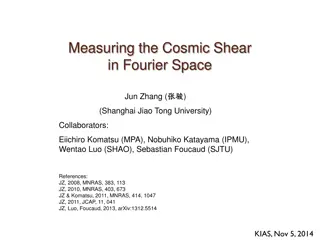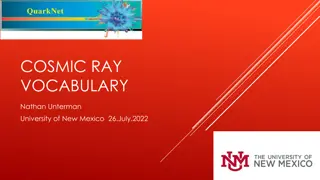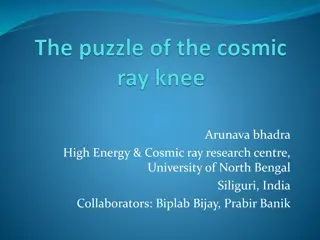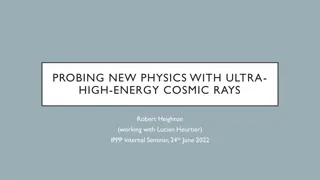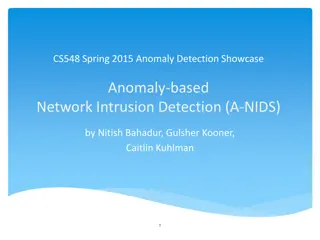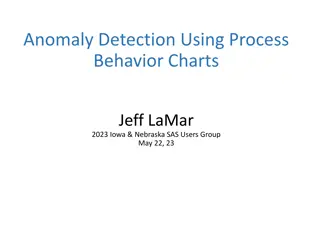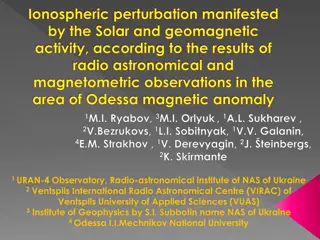Solving Cosmic Gamma Background Anomaly: Ekaterina Shlepkina's Research Insights
Explore the quest to find a solution for the cosmic gamma background anomaly in cosmic rays through Ekaterina Shlepkina's research presented at the XXII International Workshop. Learn about the investigations into cosmic rays fluxes, antiparticle studies, and possible interaction types of Dark Matter particles.
Download Presentation

Please find below an Image/Link to download the presentation.
The content on the website is provided AS IS for your information and personal use only. It may not be sold, licensed, or shared on other websites without obtaining consent from the author.If you encounter any issues during the download, it is possible that the publisher has removed the file from their server.
You are allowed to download the files provided on this website for personal or commercial use, subject to the condition that they are used lawfully. All files are the property of their respective owners.
The content on the website is provided AS IS for your information and personal use only. It may not be sold, licensed, or shared on other websites without obtaining consent from the author.
E N D
Presentation Transcript
XXII International Workshop What comes beyond the Standard Models,06-14 July 2019, Bled, Slovenia Search for a solution to the problem Search for a solution to the problem of a cosmic gamma background in of a cosmic gamma background in explaining the explaining the e e+ +(e cosmic rays cosmic rays (e- -) ) - - anomaly in anomaly in Ekaterina Shlepkina*, Konstantin Belotsky, Airat Kamaletdinov,Maxim Soloviev NRNU MEPhI, Moscow Department of elementary particles physics *speaker, sponsored by MDPI Particles award for student s scientific debut
Cosmic rays experiments PAMELA Satellite: Resurs DK-1 Since: 15 June 2006 AMS 02 Installed on the ISS Since: 16 May 2011 Fermi-LAT Space gamma telescope Since: 11 June 2008 The study of fluxes of antiparticles in cosmic rays in the range from ~ 100 MeV to hundreds of GeV. Designed to study the composition of cosmic rays, the search for antimatter and dark matter The study of astrophysical and cosmological processes centers of galaxies, gamma-ray bursts, the search for dark matter in the 2/16
Positron anomaly 3/16
Contradictions with gamma data (dark halo model) Agrees with Agrees with positron data positron data ee, , Contradictions with IGBR 4/16
Possible ways of gamma suppression Stable DM Due to space DM distribution (dark halo and dark disk models, clumps) DM halo h Star disk Unstable DM Standard Standard Model Model particles particles { {e e+ +,e ,e- -, , } Physics of DM interaction: } ??? 5/16
Possible DM interaction types We consider the decay of a hypothetical massive particle X into two leptons: DM particle X can be: Scalar Pseudoscalar Vector Axial vector 6/16
Parametrization of interaction Lagrangian The idea is to use different combinations of vector and pseudo-vector coupling, or scalar and pseudoscalar, to understand which coupling constants must be chosen in order to suppress a FSR. Then suppression of a FSR means that: 7/16
e+e-- decay model The first model of dark matter, which (we) was considered by our scientific group, was a DM model consisting of particles X interacting with opposite charged leptons (in our case positron and electron): X e+e- X e+e- After modeling this process and analyzing the results, we can conclude that the considered cases do not allow suppressing FSR. ?(? ? ? ?) ?(? ? ?) That is we obtained that ratio a and b in interaction Lagrangian. does not depend on the parameters 8/16
Background to the two-positron modes The model of the dark atom 1. M.Yu. Khlopov, JETP Lett. 83 (2006) 1; 2. D. Fargion, M.Khlopov, C.Stephan, Class. Quantum Grav. 23 (2006) 7305; 3. M. Y. Khlopov and C. Kouvaris, Phys. Rev. D 77 (2008) 065002] Absolute suppression of dipole radiation when emitting two single charged particles in the classic (Correspondence principle) The need to find the area of kinematic parameters where it is possible to suppress FSR (Single-photon theorem) Brown, R. W. "Understanding Something about Nothing: Radiation Zeros, published in Vector Boson Symp. 1995: 261- 272. RW Brown, KL Kowalski and SJ Brodsky." Phys. Rev. D 28 (1983): 624. One photon per two positrons. Suppression of the radiation is interesting in itself from the point of view of quantum physics. 9/16
Two-positrons decay model We consider (for the sake of searching the principal possibility of suppression) the dark matter models consisting of hypothetical long-lived double-charged massive (~1 TeV) particles X, interacting with identical positrons in the final state: X++ e+ + e+ and X++ e+ + e++ To build this mode, obtain Feynman rules and test this model at the diagram level, we used the package FeynRules and MC-generator MadGragh. ? = ???? + ??5? + ? ? ? ??5? + ?????? 10/16
Results for two-positrons model To obtain the squared matrix elements of the above processes, LanHEP and CalcHEP packages were used. For scalar X For vector X X e+ + e+ X e+ + e+ X e+ + e++ X e+ + e++ Ratio of decay widths does not depend on a and b parameters. Thus, we can conclude that in decays of this type of particle, the FSR is not suppressed, due to parameters a,b. 11/16
The DM model with a heavy intermediate particle It is necessary to complicate the models, therefore in the following, we consider the decay of an uncharged self-conjugate particle X into Y (Q = +2), Y (Q=-2) and annihilating DM models: e- Thus, we can consider different variations of such a model: ? e- X e+ Y ? 1. X,Y scalars; 2. X-vector, Y-scalar; 3. X,Y-vectors; 4. X-scalar,Y-vector; e+ 12/16
Results for the DM model with a heavy intermediate particle Decay models: 1) X,Y scalars: In this case, there was also a reduction in parameterization. 2) X vector, Y scalar: ?2= 0 (two-body decay) Annihilating DM models: 13/16
Model of fermion dark matter with a heavy mediator The next step in this work was to consider the model of the dark matter consisting of spinor charge-conjugated massive particles X with charge +1. Interaction Lagrangian is follows: 14/16
Conclusion When considering the decays of vector and scalar dark matter particles in two-lepton modes (electron and positron), it turned out that in these situations the parametrization of the interaction Lagrangian does not give any positive results. We considered the decays of a vector and a scalar particle of dark matter into two identical positrons. It turned out that the FSR is not suppressed in these models. Were considered more complex models of dark matter with a massive intermediate particle. Studied various variations of such models. In the next step, models of fermion dark matter were considered. It was found that in such a model, no parameterization reduction occurs. FSR energy distributions were obtained for different variations of the parameters a, b, c, d. 16/16
Thank you for attention! Shlepkina Ekaterina +7 (980)5122-503 shlepkinaes@gmail.com
Plans Continue to develop a fermion model of dark matter More detailed study of model dependencies on parameters How does the theorem work in these models? Consideration of another promising model of dark matter where no cancelation observed: of parameters is
FSR energy spectra for the fermion model FSR energy spectra FSR energy spectra with modified parameters a,b,c,d
